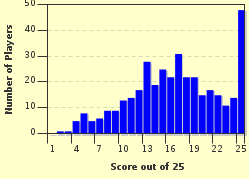Quiz Answer Key and Fun Facts
1. There was a leader of the American Communist Party who ran four times for the Presidency of the United States. What was his name?
2. Who was the satirist who founded "The Realist," was a founder of the Yippies and also a member of Ken Kesey's The Merry Pranksters?
3. Who was the author of "Life Against Death: The Psychoanalytical Meaning of History"? A later book, "Love's Body" proposed that there was a division between eroticism and civilization.
4. What famous inheritor of the adding machine fortune, a heroin addict (junkie) also was a friend of Allen Ginsberg and author of the famous novel called "The Naked Lunch?" He is famous for his statement that "language is a virus from outer space."
5. What is the name of the idea about language that Noam Chomsky, a famous and sometimes controversial, linguist, introduced?
6. What is the name of the 1963 book authored by Betty Friedan which argued that women were not destined only to stay at home?
7. What author, originally born in Peru, wrote 12 books dealing with Don Juan and Mesoamerican Shamanism which sold millions of copies in at least 17 or more languages? He presents "nonordinary reality" as a place which people could get to.
8. Who is the co-founder of a world-famous North Beach bookstore in San Francisco?
9. Who was the leader of the Free Speech movement in the 1960s at the University of California, Berkeley in 1964?
10. Who is the American soprano with long dark hair whose voice could be heard singing "We Shall Overcome"?
11. Who has been called the "father of community organizing" because of the nature of his work in Chicago?
12. What woman labor activist was called "The Miners' Angel"?
13. Who was one of the main founders of the American Federation of Labor in 1886?
14. Who were two Italian-born American anarchists who were executed in 1927 for a 1920 murder of two pay clerks in Massachusetts?
15. Who is a radical woman dancer who died in a car accident involving her flowing scarf?
16. What was the name of the group of radical workers in mass production industry who split apart on an industry organized basis in 1935?
17. Who was the woman poet who was known for these lines of poetry,
"My candle burns at both ends;
It will not last the night;
But ah, my foes, and oh, my friends -
It gives a lovely light."
"First Fig"
18. What is the name of the area in New York City that is associated with the avant-garde in the arts and with political rebellion?
19. What was the name of the group of people who were violently opposed to the Vietnam War? The key word here is "violently."
20. Which of the following was NOT associated with Beat poetry?
21. Which of the following was a member of the Black Panther party?
22. Who is the folk singer who identified with the oppressed and poor and wrote "This Land is Your Land?"
23. "The Chicago Seven" were convicted of inciting a riot and of conspiracy to incite a riot at the 1968 Chicago Democratic convention. Their verdict was overturned on appeal. Who is one of the convicted? (He was a co-founder of the Yippies).
24. Who was the writer who was asked to advise Dr. Martin Luther King on how to use Gandhian principles of non-violence in protests?
25. Who is the writer of "One Flew Over the Cuckoo's Nest"?
Source: Author
windswept
This quiz was reviewed by FunTrivia editor
bloomsby before going online.
Any errors found in FunTrivia content are routinely corrected through our feedback system.

